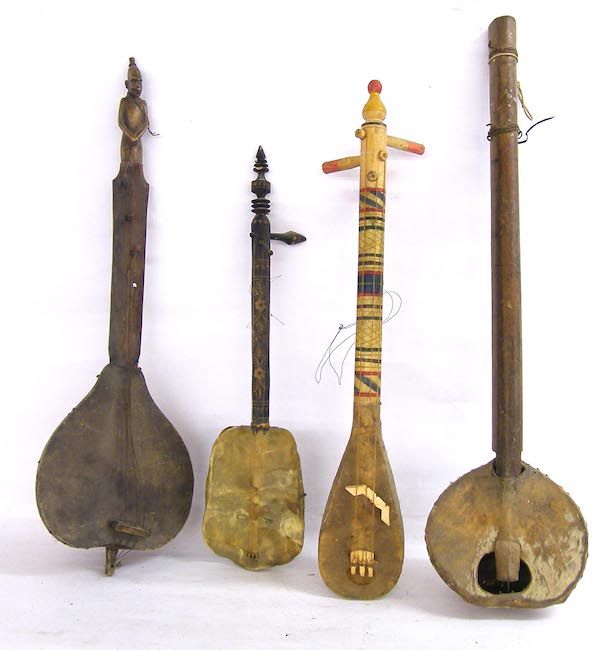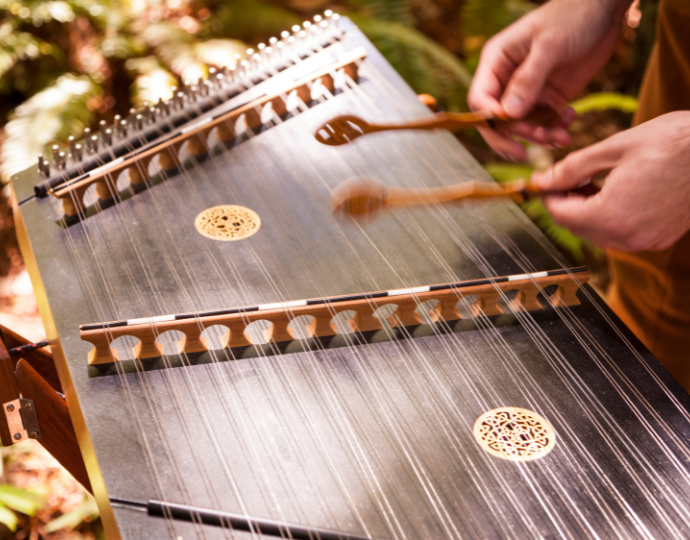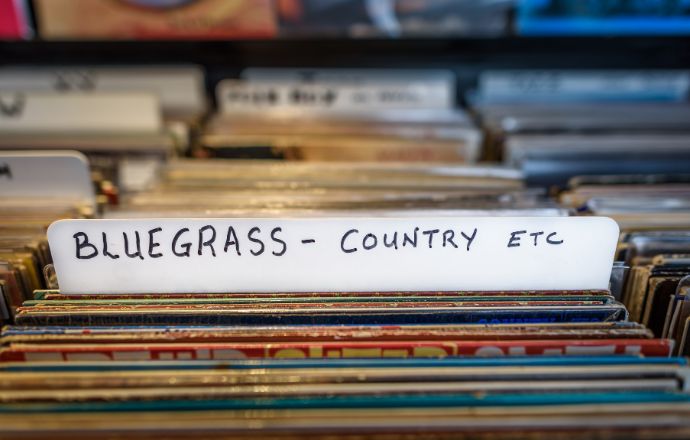[Updated on September 18, 2023] The Appalachian Mountains encompass a massive portion of the United States. They span 420 counties in 13 states, with foothills as far south as Alabama and all the up into New York State.
Before the arrival of Europeans, the region was home to numerous indigenous tribes, including the Cherokee, Iroquois, Powhatan, and Shawnee. It was home to Native Americans as far back as 16,000 years ago.
The mountain ridges acted as a boundary (or at least a notable impediment) to colonial expansion until Daniel Boone found a route through via the Cumberland Gap. Bitter battles ensued as pioneers “discovered” new territories.
The Blue Ridge Mountains were largely settled by poor Scots-Irish, who brought with them a vibrant culture centered on family and rebellion. They also carried a rich tradition of storytelling and making music, particularly on the fiddle.
Affluent Germans also built settlements, often using enslaved Africans. These African Americans brought in what became classic foods for Appalachian farmers, such as sweet potatoes, black-eyed peas, watermelons, and peanuts.
They also introduced what would become an important instrument, the banjo.
These impoverished whites and African Americans soon meshed their musical influences, combining up-tempo fiddle playing with rhythmic banjo picking. The instruments meshed to create a new sound of Americana.
From there, the music evolved in different directions, including old-time music, American folk music, country music, and (possibly the most regionally recognized genre) bluegrass music.
Read on to learn more about what bluegrass is, as well as the history and evolution of Appalachian music.
READ MORE: The 25 Best North Carolina Music Festivals
What is Bluegrass? The History & Evolution of Appalachian Music Guide
- What is Bluegrass?
- Traditional Bluegrass Instruments
- The History of Bluegrass Music
- The Best Bluegrass Bands & Artists Today
- Bluegrass Museums & Trails
- Bluegrass Music Festivals
READ MORE: Where are the Blue Ridge Mountains? A State-by-State Guide

1. What is Bluegrass?
Bluegrass music is roots music from the American South. It’s essentially a blend of blues and gospel from African-Americans and string band music from Scots-Irish traditions.
Like several other related Americana subgenres, its early development was in the late 1800s and early 1900s.
Settlers of Appalachia, particularly North Carolina, Kentucky, Tennessee, Virginia, and West Virginia, used conventional folk instruments of their past to write new songs about their daily life.
These folk tunes remained largely regional in the early days, and were often referred to as hillbilly music or mountain music.
The music was made with acoustic instruments that could be played on porches, often accompanied by the vocal harmonies of two, three, or more people.
Bluegrass as its own specific style of music became clear in the 1940s. Singer-songwriter Bill Monroe and his band, the Bluegrass Boys, popularized the genre with an iconic appearance at the Grand Ole Opry.
The term “bluegrass” derives from Monroe’s band, which took its name from Kentucky bluegrass, a meadow grass that’s native to the Appalachian range. So it felt like a suitable name for Appalachian music.
Bluegrass music is known for its syncopated, off-beat rhythms and fast-driving pulse. Each of the string-band players relies on open strings to ring, or “drone”, throughout the song.
The genre is considered structurally simple, using basic chording. But it is melodically complex, passing the lead between players, who often display dexterity that would rival that of any classical or jazz musician.
READ MORE: The Appalachian Culture & History of the Blue Ridge Mountains

2. Traditional Bluegrass Instruments
Bluegrass instruments traditionally center around string instruments.
Banjo and fiddle are considered crucial to the sound, with guitar, mandolin, and upright bass also being common additions. Dobro and dulcimer might also show up in bluegrass string bands.
There were occasional homespun instruments added to the bluegrass sound, including washtub basses, spoons, jugs, washboards, etc.
But these instruments are not considered integral in the bluegrass sound.
READ MORE: The 15 Best Things to Do in Cherokee NC & the Qualla Boundary

Bluegrass Fiddle
Fiddles are violins, and violins are fiddles.
These instruments have the same body and neck. They both have four strings, and both are played with a bow.
Physically, violins are more likely to have arched bridges, which are good for clear notes. Bluegrass fiddles will have flatter bridges, which are better for double-stop bowing.
Also, the strings of a fiddle are likely to be steel core for better durability, whereas violins often have softer strings.
More than physical differences, though, fiddling has a different attitude about it than playing the violin.
Bluegrass music is more likely to be improvised and choppy. The player might not hold the fiddle using the chin rest, because they often have to sing while playing.
Some of the most famous bluegrass fiddlers are Bobby Hicks, Allison Krauss, Mark O’Connor, and Michael Cleveland, to name just a few.
READ MORE: Exploring the Blue Ridge Music Center Near Galax VA (Blue Ridge Parkway MP 213)

Bluegrass Banjo
Banjos have evolved from several different, similar traditional African instruments. The typical bluegrass banjo now has its own specific characteristics that are distinct from other banjos.
Appalachian banjos are typically 5-string banjos. Four of the strings are full-length, but there’s a high fifth string that’s only half-length. Normally, these strings are tuned to an open-G formation.
Bluegrass utilizes different methods of playing the banjo.
Some of the most popular banjo styles are called clawhammer, Scruggs style, Keith style (a.k.a. melodic), and Reno style (a.k.a. single-string). The latter was popularized by Don Reno, who lived in the Waynesville/Maggie Valley area.
All of these styles of play normally include fingerpicks and involve a rolling eighth-note rhythm.
Banjo players of note in bluegrass include Earl Scruggs, J.D. Crowe, John Hartford, Kristin Scott Benson, Steve Martin (yes, the famous comedian), Rhiannon Giddens, and Bela Fleck.
READ MORE: 40 Facts About the History of the Banjo (From Africa to Appalachia)

Bluegrass Guitar
Guitar is common in many genres of music, and it remains highly regarded in bluegrass music circles.
While bluegrass playing doesn’t rely on a gluttony of chords, players take the chords used and, through finger picking, make more complex music.
The main responsibility of bluegrass guitarists is laying down the rhythm.
But, much like jazz, bluegrass music has the tradition of passing around opportunities for each member of the ensemble to strut their stuff in a solo.
Famous bluegrass guitarists include Doc Watson (who grew up near Boone NC), Tony Rice, David Grier, Bryan Sutton, Larry Sparks, and young phenom Billy Strings (who recently stole the show at Lollapalooza 2022).
READ MORE: The 25 Best Things to Do in Boone NC

Bluegrass Mandolin
Mandolins were wildly popular in the early 1900s, when entire mandolin orchestras were playing across the United States. But even after its popularity died out, folk musicians of the Blue Ridge Mountains kept on picking.
Bluegrass mandolins tend to have flat backs (which make them easier to play standing up) and arched tops. The bodies have a couple of different shapes (a-style and f-style), as do the sound holes (round/oval or a pair of f-holes).
Mandolins have been a part of bluegrass music from its inception. They’re primarily used for rhythm, with a chop or “chunking” sound that creates a percussion-like beat.
They’re also used to play harmonies behind singing, and mandolinists always get a chance to show their chops during improved “breaks.”
The father of bluegrass music, Bill Monroe, was the most legendary mandolinist. Other noteworthy mandolin players include Ricky Skaggs, Sam Bush, David Grisman, and Chris Thile (of Nickel Creek and Punch Brothers).
READ MORE: The 25 Best Fall Fairs and Festivals in Georgia

Appalachian Dulcimer, Dobro, & Other Stringed Instruments
There are several other stringed instruments within the bluegrass family, but they may not be as prevalent. Nevertheless, they are worth recognizing.
The upright bass is a part of bluegrass, but was considerably less present in the folk and old-time music that led to it. The instrument was too cumbersome to transport before cars were everywhere.
The dobro and hammered dulcimer are other stringed instruments of the Appalachian region, and they are not completely out of place in certain bluegrass tunes. They’re often used to make new versions of old classics as well.
The dobro is a type of guitar with a metallic resonator, typically played flat across the lap. Hammered dulcimers are also stringed lap instruments that are considered fairly easy to learn, with strings that are struck with little mallets.
READ MORE: The 15 Best North Carolina Mountain Towns to Visit
3. The History of Bluegrass Music

Early Appalachian Folk Music
Early Appalachian folk music really began to arise in the mid-1700s and early 1800s.
Lower-class immigrants from Europe (particularly Scotland and Ireland) arrived and created self-sufficient communities in the mountains, which eventually grew into the small towns we know today.
Members of these communities lived on remote farms and would gather for dances, usually playing traditional Celtic folk music.
The fiddle was the centerpiece instrument for this music, and vocal ballads were also part of the tradition.
On the other side of the coin, enslaved Africans brought over their own musical traditions. These included group singing with call-and-response melodies, as well as music with strong percussive rhythms.
They also introduced the gourd instruments that would morph into the banjo, which featured strings stretched over a drum head. The banjo eventually became integral to the rise of folk music in America.
READ MORE: The Top 25 Blue Ridge Mountain Towns in GA & NC

Old-Time Music
From the early American folk songs and the desire to dance arose old-time music, which was played to cater to square dancing, clogging, and flat-footing.
Like bluegrass, it was mostly reliant on string instruments, particularly those that could be transported easily.
Old-time music (which is sometimes called old-timey music, or mountain music) is much more of a group effort, with the purpose of giving the crowd something to move to. It usually lacks the solo breaks that are typical of bluegrass.
Old-time music was heavily reliant on the fiddle to provide lead and melody, and the banjo to provide the rhythm. Other stringed instruments, such as guitar, mandolin, and upright bass, also became standard in the old-time jams.
Old-time music is still very much present in Appalachia today. There are old-time fiddlers’ conventions held annually in towns such as Galax VA and Lenoir NC (just 20 miles southeast of Blowing Rock NC).
READ MORE: The 20 Best Things to Do in Blowing Rock NC

Bluegrass Pioneers
Bluegrass has deep roots in old-time music, but it also dipped heavily into jazz, which lent the genre its expressive brand of improvisational solo breaks.
Kentucky native Bill Monroe– an accomplished mandolinist, singer, and composer– is considered the “father of bluegrass.” He also led the Blue Grass Boys, who helped usher bluegrass into the national spotlight.
Bill Monroe & the Blue Grass Boys didn’t really hit their stride until Lester Flatt picked up the guitar and Earl Scruggs took over banjo duties. Scruggs’ unique style of finger-picking quickly became the standard for bluegrass players.
Flatts and Scruggs left Monroe’s band after a few years and formed the Foggy Mountain Boys.
They recorded some of the most popular bluegrass songs ever, including “Foggy Mountain Breakdown” and “The Ballad of Jed Clampett” (a.k.a. The Beverly Hillbillies theme song).
Other noteworthy bluegrass pioneers include the Osborne brothers, Grandpa Jones, Chubby Wise, and Mac Wiseman.
READ MORE: The 20 Best Blue Ridge Parkway Overlooks in NC & VA

4. The Best Bluegrass Bands & Artists Today
Of course, bluegrass music is still very much alive and kicking today, with new incarnations of its traditions found in newgrass (also known as progressive bluegrass).
Newgrass melds the traditions of bluegrass with other genres like rock and pop, sometimes adding new instruments like electric guitar and drums.
Béla Fleck, who is considered by many critics and fans to be the best banjo player alive (and possibly ever), has been a major influence on this movement.
Allison Krauss & Union Station may be the most recognizable act of the new wave of bluegrass, while the Infamous Stringdusters are also a trademark progressive bluegrass band.
Billy Strings is a young bluegrass guitar virtuoso who mixes in plenty of rock ‘n’ roll influences. Sierra Hull is another young singer-songwriter who has taken the bluegrass world by storm.
If you’re interested in the African-American influence on modern bluegrass, check out the work of Greensboro NC native Rhiannon Giddens, both with the Carolina Chocolate Drops and her all-female act, Our Native Daughters.
Some other modern bluegrass bands to check out include Kentucky Thunder, Yonder Mountain String Band, Trampled by Turtles, Punch Brothers, and Chatham County Line.
READ MORE: 20 Incredible Places To See the Blue Ridge Mountains in Fall

5. Bluegrass Museums & Trails
Appalachian music is still prevalent in the modern music scene, particularly in the mountains, where bluegrass music originated.
There are several fantastic music trails where bluegrass history features prominently.
The Crooked Road is Southwest Virginia’s Heritage Music Trail. Blue Ridge Music Trails of North Carolina is full of great bluegrass venues, as are the Tennessee Music Pathways.
Lots of museums are centered on Appalachian folk songs and bluegrass tunes.
Kentucky is home to the Bluegrass Music Hall of Fame & Museum, while the Blue Ridge Parkway in Virginia has the Blue Ridge Music Center.
The Floyd Country Store in Floyd VA is renowned for its Friday Night Jamboree, and Nashville helps to establish the definition of bluegrass vs. country with Sunday night jams at the Station Inn.
READ MORE: The 15 Best Virginia Music Festivals to Visit

6. Bluegrass Music Festivals
Music festivals are also great options for seeing the top names in bluegrass, as well as up-and-comers.
Raleigh NC is home to the largest urban bluegrass festival, Wide Open Bluegrass Festival, which takes over a few blocks in Downtown Raleigh for days. The Earl Scruggs Music Festival is another major NC bluegrass festival.
Galax VA has the world-renowned Old Fiddler’s Convention. The small Virginia mountain town becomes a music mecca for 6 days, with dances, competitions, camping, and lots of jamming.
Vine Grove KY hosts the annual Vine Grove Bluegrass Music Festival, with big-name performers and jam sessions in the campgrounds that last well into the night.
The Jerusalem Ridge Bluegrass Celebration is held at the home place of Bill Monroe in Rosine KY, with 4 days of bluegrass music and the beloved Bill Monroe Mandolin Competition.
In West Virginia, there’s the Lewis County Bluegrass Festival, the Dream Mountain Bluegrass Festival, and the Music in the Mountains Bluegrass Festival. –Jonathon Engels, featured image via Canva





